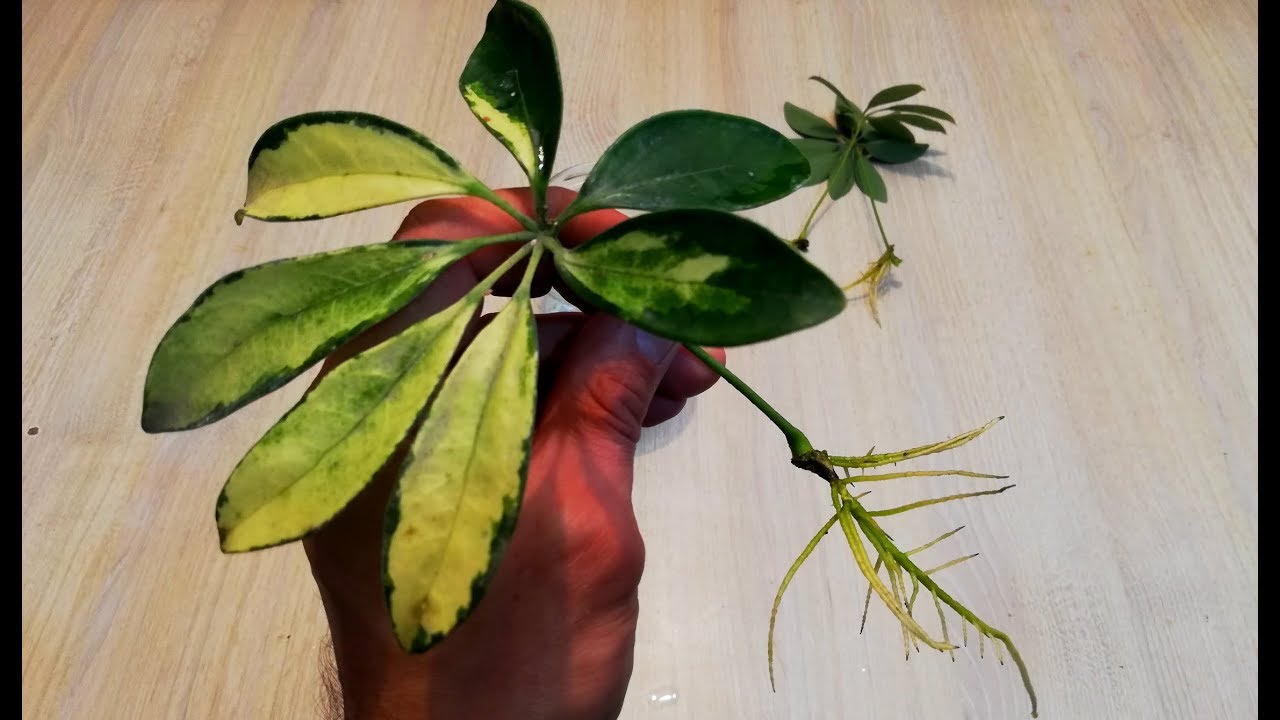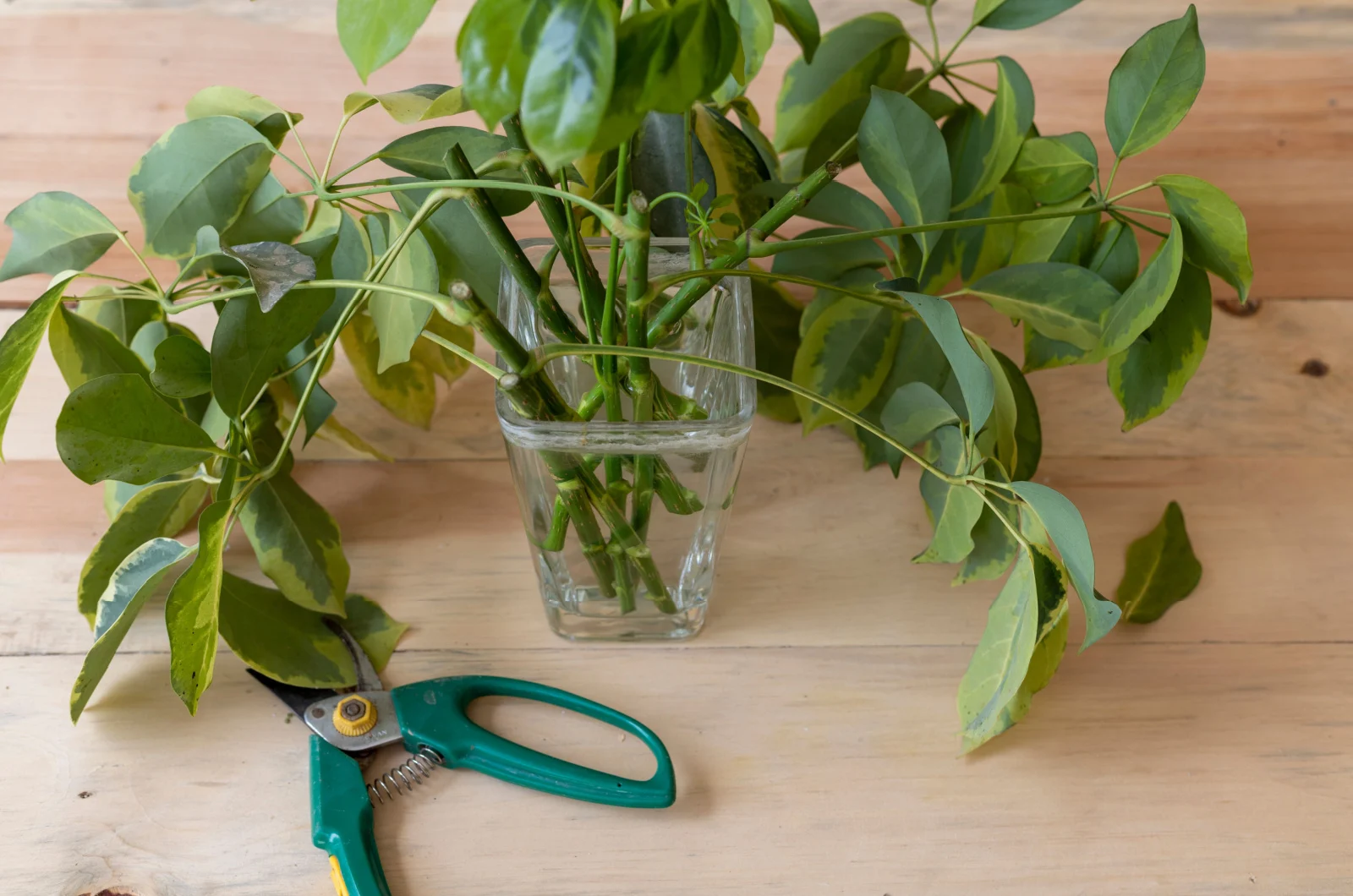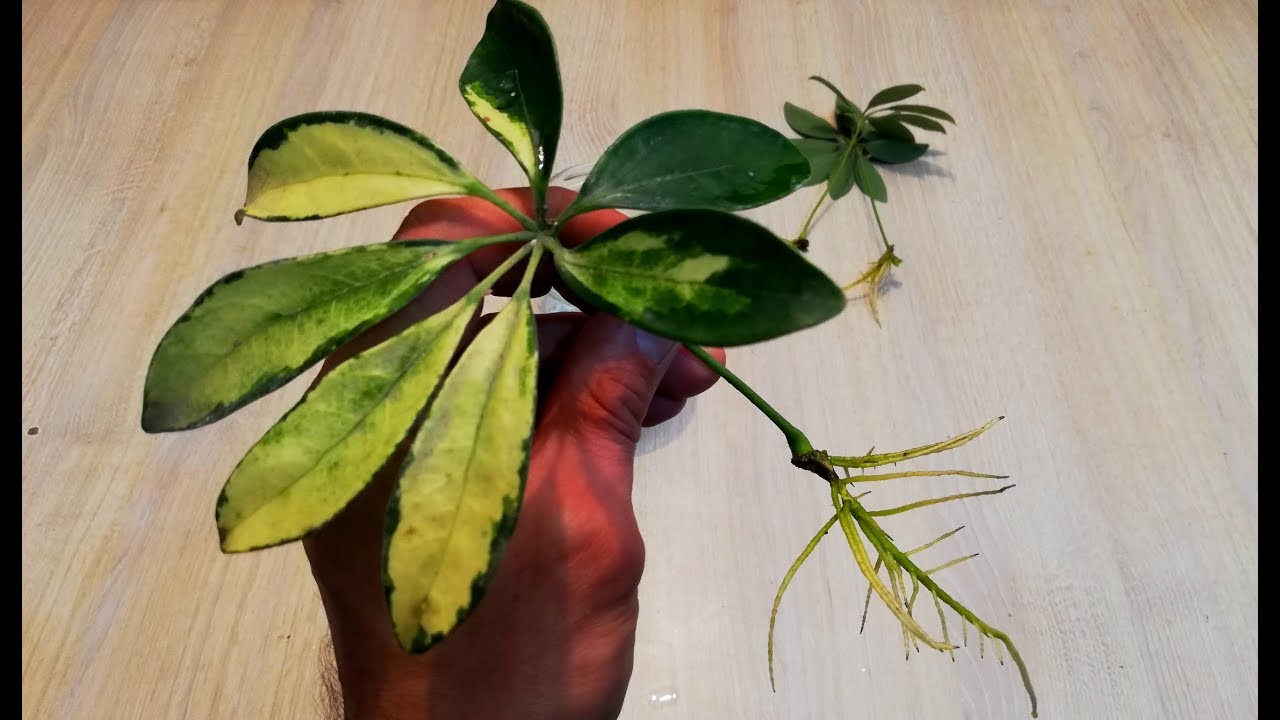Discover How to Multiply Your Schefflera Plants with These Easy Methods, and unlock the secrets to creating a lush, thriving collection of these popular houseplants. Schefflera plants, with their vibrant foliage and graceful forms, are a favorite among plant enthusiasts, offering a touch of the tropics to any indoor space.
But did you know that propagating these plants is surprisingly simple? This comprehensive guide will equip you with the knowledge and techniques to successfully multiply your Schefflera collection, whether you’re a seasoned gardener or just starting out.
From air layering to stem cuttings and seed propagation, we’ll explore the various methods available, providing detailed step-by-step instructions and expert tips to ensure your success. Learn about the advantages and disadvantages of each technique, allowing you to choose the method that best suits your experience level and desired outcome.
Get ready to unleash your green thumb and transform your home into a flourishing Schefflera paradise.
Introduction to Schefflera Plants
Schefflera plants, also known as umbrella trees, are popular houseplants due to their attractive foliage and relatively easy care requirements. These plants are known for their large, glossy leaves that resemble the spokes of an umbrella, giving them their common name.
Schefflera plants are native to tropical and subtropical regions of the world, and they thrive in bright, indirect light and warm temperatures.Propagating Schefflera plants is a rewarding process that allows you to expand your plant collection and share these beautiful plants with others.
By understanding the different methods of propagation, you can easily multiply your existing Schefflera plants and enjoy the satisfaction of growing new plants from cuttings.
Reasons for Multiplying Schefflera Plants
There are several reasons why people choose to multiply their Schefflera plants:
- Expanding your plant collection:Propagating Schefflera plants allows you to create new plants without having to purchase them from a nursery or garden center. This is a cost-effective way to expand your collection and enjoy the beauty of these plants in various locations within your home.
- Sharing with others:Propagating Schefflera plants allows you to share your passion for gardening with friends and family. Sharing cuttings or new plants is a thoughtful gift that can bring joy to others and encourage them to explore the world of plant propagation.
- Preserving a beloved plant:If you have a particularly cherished Schefflera plant, propagating it allows you to create a backup plant in case the original plant is damaged or diseased. This ensures that you can preserve a piece of your plant collection even if the original plant is lost.
- Experimenting with different varieties:Schefflera plants come in a variety of shapes, sizes, and leaf colors. By propagating different varieties, you can create a unique and diverse collection of Schefflera plants that complement your home decor.
Methods for Multiplying Schefflera Plants

Propagating Schefflera plants is a rewarding process that allows you to expand your collection or share these beautiful plants with others. Several methods can be used to create new Schefflera plants from existing ones, each with its own advantages and disadvantages.
Methods for Propagating Schefflera Plants
Method |
Description |
Advantages |
Disadvantages |
|---|---|---|---|
Air Layering |
This method involves encouraging roots to develop on a stem while it is still attached to the parent plant. To air layer a Schefflera, you’ll need to make a cut into the stem, apply rooting hormone, and wrap the cut area in moist sphagnum moss. This method is often successful and produces plants with a well-developed root system. |
|
|
Stem Cuttings |
Stem cuttings are a popular method for propagating Schefflera plants. To take a stem cutting, simply cut a section of healthy stem with at least two nodes. Remove the leaves from the bottom node and dip the cut end in rooting hormone. Plant the cutting in a suitable rooting medium and keep it moist. |
|
|
Seed Propagation |
Seed propagation is the most time-consuming method of propagating Schefflera plants. Schefflera seeds are small and require warm temperatures to germinate. Once the seeds have germinated, the seedlings will need to be transplanted into individual pots. |
|
|
Division |
Division involves separating a mature Schefflera plant into multiple smaller plants. This method is most effective with plants that have developed multiple stems or clumps. Simply divide the plant into sections, ensuring each section has its own roots. |
|
|
Comparing and Contrasting Propagation Methods
The best method for propagating Schefflera plants depends on your experience level, time commitment, and desired number of plants. Air layering and division are generally the most successful methods, but they can be more time-consuming. Stem cuttings are a good option for beginners, but they may not always be successful.
Seed propagation is the most time-consuming method, but it can be rewarding if you are looking to create new varieties.
Step-by-Step Guide for Each Method
This section provides detailed, step-by-step instructions for each propagation method, ensuring you have the knowledge and tools to successfully multiply your Schefflera plants. Remember, using sterilized tools and a suitable potting mix are crucial for preventing infections and promoting healthy root development.
Air Layering, Discover How to Multiply Your Schefflera Plants with These Easy Methods
Air layering is a method of rooting a stem while it is still attached to the parent plant. This technique is particularly useful for Schefflera plants as it allows you to propagate even mature, woody stems.
While you’re busy propagating your Schefflera plants, take a break and immerse yourself in the vibrant beauty of autumn at Fall in Love with the Harvest Moon Orchard: A Seasonal Wonderland. This enchanting orchard offers a captivating blend of colors and scents, making it the perfect escape from the everyday routine.
After your seasonal stroll, return to your Schefflera propagation with renewed inspiration, ready to nurture your leafy companions.
- Select a stem:Choose a healthy, mature stem that is at least 1/2 inch thick and has several nodes (the points where leaves grow). Avoid selecting stems that are too close to the base of the plant.
- Make an incision:Using a sharp, sterilized knife or pruning shears, make a shallow cut, about 1/2 inch long, around the stem. The incision should be deep enough to expose the cambium layer, which is the layer just beneath the bark.
- Apply rooting hormone:Apply a rooting hormone powder or gel to the exposed cambium layer. Rooting hormone promotes root development.
- Wrap the incision:Wrap the incision with moist sphagnum moss, which provides a humid environment for root development. Secure the moss in place with plastic wrap or aluminum foil, ensuring it is tightly sealed.
- Maintain moisture:Regularly mist the moss to keep it moist. Avoid letting it dry out.
- Monitor for roots:After several weeks, check for root development. You can gently tug on the moss to see if it is attached to the stem. If roots are visible, you can proceed to the next step.
- Cut and pot:Once roots have developed, carefully cut the stem below the air layer and remove the moss. Plant the rooted stem in a pot filled with a well-draining potting mix.
Caring for Newly Propagated Schefflera Plants

Newly propagated Schefflera plants are delicate and require careful attention to thrive. Providing the right conditions for growth is crucial for their survival and successful establishment. This section will guide you through the essential care practices for your newly propagated Schefflera plants, ensuring they flourish and develop into healthy, vibrant specimens.
Light Requirements
Schefflera plants prefer bright, indirect light. Direct sunlight can scorch their leaves, leading to brown spots and damage. When caring for newly propagated Schefflera plants, it is best to position them in a location that receives filtered sunlight, such as near a window with a sheer curtain.
Avoid placing them directly in front of a south-facing window, especially during the hottest part of the day.
Watering
Newly propagated Schefflera plants have a delicate root system, making them susceptible to overwatering. It is important to allow the soil to dry slightly between waterings. The frequency of watering will depend on factors such as the size of the pot, the type of soil, and the ambient temperature.
To check if the soil is dry, insert your finger about an inch into the soil. If it feels dry, it is time to water the plant.
Humidity
Schefflera plants thrive in humid environments. To increase humidity around your newly propagated plants, you can use a humidifier or place the pots on a tray filled with pebbles and water. The water will evaporate, creating a more humid microclimate around the plants.
Fertilization
Newly propagated Schefflera plants do not require fertilization immediately. Their initial focus should be on developing a strong root system. Once the plants show signs of healthy growth, such as new leaf development, you can start fertilizing them with a balanced liquid fertilizer diluted to half strength.
Fertilize every 2-4 weeks during the growing season (spring and summer).
Just like Schefflera plants, Venus flytraps can also be easily propagated, allowing you to expand your collection of carnivorous beauties. If you’re interested in learning more about the art of multiplying these fascinating plants, check out Your Complete Venus Fly Trap Propagation Guide for Beginners.
Once you’ve mastered the techniques for Venus flytraps, you’ll be well on your way to multiplying your Schefflera plants using similar methods like stem cuttings or air layering.
Pest Control
Schefflera plants are susceptible to pests such as spider mites, mealybugs, and aphids. Regularly inspect your plants for any signs of infestation. If you notice any pests, you can treat them with insecticidal soap or neem oil. These products are safe for use on houseplants and are effective in controlling common pests.
Preventing Root Rot
Overwatering is the primary cause of root rot in Schefflera plants. To prevent this problem, ensure that the soil is well-draining and that the pots have drainage holes. Avoid letting the plants sit in water for extended periods.
Repotting
Once your newly propagated Schefflera plants have developed a strong root system and outgrown their current pots, it is time to repot them. Signs that your Schefflera plants need repotting include roots growing out of the drainage holes, the plant becoming root-bound, and slow growth.
When repotting, choose a pot that is slightly larger than the previous one. Use a well-draining potting mix and ensure that the plant is positioned at the same depth as it was in the previous pot.
Troubleshooting and Tips
While Schefflera propagation is generally straightforward, there are a few common issues that may arise. This section will cover troubleshooting tips and practical advice to help you overcome challenges and ensure successful propagation.
Identifying and Addressing Common Issues
- Root Rot:Overwatering is a common culprit, leading to root rot and hindering growth. To prevent this, ensure the potting mix is well-draining and allow the soil to dry slightly between waterings.
- Lack of Root Development:If cuttings fail to develop roots, it could be due to insufficient humidity or unsuitable temperatures. Ensure the cuttings are kept in a warm, humid environment, ideally using a propagation dome or plastic bag to trap moisture.
- Leaf Drop:This can occur due to stress from changes in environment, such as temperature fluctuations, insufficient light, or overwatering. Maintain consistent conditions and ensure adequate light exposure to prevent leaf drop.
- Pest Infestations:Mealybugs and spider mites are common pests that can affect Schefflera plants. Regularly inspect your plants for signs of infestation, such as white cottony masses or fine webbing. Treat infestations promptly with insecticidal soap or neem oil.
- Disease:Schefflera plants are susceptible to fungal diseases, such as leaf spot and root rot. Ensure proper drainage and avoid overwatering to prevent fungal infections. If you notice signs of disease, such as spots or discoloration on leaves, remove affected parts and treat the plant with a fungicide.
Practical Tips for Successful Propagation
- Use Sharp Tools:Clean, sharp cutting tools are essential for making precise cuts that minimize damage to the plant.
- Select Healthy Cuttings:Choose healthy, disease-free stems with several nodes (where leaves grow) for optimal propagation success.
- Dip Cuttings in Rooting Hormone:This can help stimulate root growth and increase the chances of successful propagation.
- Maintain Consistent Humidity:High humidity is crucial for root development. Use a propagation dome or plastic bag to create a humid environment.
- Provide Adequate Light:While avoiding direct sunlight, ensure the cuttings receive bright, indirect light.
- Avoid Overwatering:Allow the potting mix to dry slightly between waterings to prevent root rot.
- Patience is Key:Root development can take several weeks or even months. Be patient and monitor your cuttings regularly for signs of growth.
Final Conclusion: Discover How To Multiply Your Schefflera Plants With These Easy Methods
With a little patience and the right techniques, multiplying your Schefflera plants is a rewarding experience that allows you to enjoy the beauty of these plants even more. By following the methods Artikeld in this guide, you can create a thriving collection of Scheffleras that will bring a touch of tropical elegance to your home.
Whether you choose air layering, stem cuttings, seed propagation, or division, remember to provide your newly propagated plants with the care they need to flourish. Enjoy the process of nurturing these plants as they grow and multiply, adding a touch of green magic to your surroundings.
Q&A
How often should I water my newly propagated Schefflera plants?
Water your newly propagated Schefflera plants when the top inch of soil feels dry to the touch. Avoid overwatering, as this can lead to root rot.
What are the signs of a healthy Schefflera plant?
Healthy Schefflera plants have vibrant green foliage, new growth, and strong stems. They should also be free of pests and diseases.
What are some common pests that can affect Schefflera plants?
Common pests that can affect Schefflera plants include spider mites, mealybugs, and scale insects. Regularly inspect your plants for signs of infestation and take appropriate action if necessary.
